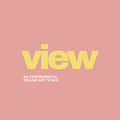Recently I asked who was interested in showing work in an online gallery connected to this Substack newsletter.
The response was overwhelmingly positive.
Then I froze.
I panicked because I was unsure what form a ‘gallery’ should take or even if ‘gallery’ was the right word. Maybe a ‘viewing room’ is better. Or just ‘art space’. I don’t know.
But while I figure it out (and I welcome your thoughts too) let’s look at what a traditional gallery is (in my Private View), where it came from, and where we might take it.
What is an art gallery?
In the contemporary art world that sprouted from a Euro-centric worldview and is now entangled within a capitalist economy:
An art gallery is a retail outlet for art. It’s a shop; a store.
The gallery owner (often called a gallerist) is a shopkeeper.
Artworks are the products marketed and sold by the gallery to generate profit for the business.
The people who make the products sold by a gallery are called artists.
Depending on market positioning, the owner may consider their gallery a purveyor of elite, luxury goods—similar to a high-end fashion house such as Chanel or Gucci—or position their gallery in a more affordable section of the market, as more of a local gift store, for example. Just as there are infinite variations of a retail store, the shapes a gallery can assume are multitudinous, although ‘convention’ has set a few rules and expectations.
Does the above sound boring? Not glamorous enough? Did I knock the gallery off a pedestal?
As artists, we must understand the opportunities and limitations of the gallery as a space for us to exhibit our art. Private galleries are not public service organisations or charities that exist to serve local artists, they are businesses, and as such the art they show has more to do with the interior design preferences and tastes of local buyers than it has with representing the art being produced locally (that’s the museum’s role).
I hope that makes you feel better if you’ve had work rejected by your local gallery.
Of course, galleries DO have relationships with local artists, art collectors and museums—that’s just sensible marketing and hopefully part of their value system—but a gallery is primarily a for-profit entity within a capitalist economy, subject to all the same market pressures as every other retail outlet.
How did the gallery system begin?
The gallery system as we know it today began at the end of the 18th century with the decline of art patronage. With more and more artists creating work outside of the commissioned art model, the role of the art dealer emerged and in 1794 the first shop specifically designed for the sale of artworks opened in London, called the “Gallery of Fine Arts”.
As the gallery model became more established throughout the 19th century onwards, new vocabulary and conventions were invented to separate galleries from everyday retail and elevate its cultural and economic capital:
Art is not bought, it is ‘acquired’.
Someone who purchases art is a ‘collector’ not a buyer.
A shop display of art is an ‘exhibition’.
Exhibitions are ‘rotated’ usually monthly and have ‘openings’ where the artist can meet art collectors.
The gallery space rarely reflects the conditions under which the art is created; it is clean, quiet, and uncluttered.
The ‘art’ product is clearly defined. Art is framed or otherwise boundaried; it is often elevated onto either a wall or pedestal; it is labelled unobtrusively; it may be protected by glass, acrylic screen or a rope to prevent the viewer from being in close proximity to the piece.
You cannot touch the art.
Artists provide a ‘statement’ to explain their art.
A small red circle is placed on the label of sold artwork.
Galleries do not buy ‘stock’ to re-sell, they offer a percentage of the sale fee to the artist—usually 50%.
Galleries never have a sale.
The White Cube
The brightly lit ‘white cube’ that emerged in the 1960s and is now the predominant gallery aesthetic was conceived to alienate art even more from the outside world and elevate it to a grander status, resulting in higher prices and cultural ranking. It also reflected a more business-like approach to art dealing, recognising art as an investment vehicle, with a clearer emphasis on art as a commodity.
The ‘white-cube’ aesthetic also brought about a homogeneity in how art was—and still is—presented across galleries with varying market positionality. This made it easier for viewers to ‘consume’ artworks and for collectors to compare works. The experience of viewing art became sanitised, literally “white-washed” (in all the meanings of that phrase), and isolated from the ‘real world’ outside of the gallery walls.
As art viewers, we may feel like we are intruding into the space: our bodies are not required, only our eyes, minds and bank accounts.
“the gallery [has] a limbolike status; one has to have died already to be there. Indeed the presence of that odd piece of furniture, your own body, seems superfluous, an intrusion. The space offers the thought that while eyes and minds are welcome, space-occupying bodies are not - or are tolerated only as kinesthetic mannequins for further study. This Cartesian paradox is reinforced by one of the icons of our visual culture: the installation shot, sans figures. Here at last the spectator, oneself, is eliminated.
From ‘Inside the White Cube’ by Brian O’Doherty
I’d add that not only is the spectator eliminated, but so is the artist.
My Private View
I’m not interested in perpetuating this ancient model of the art gallery, nor am I interested in adhering to the long list of unwritten conventions that surround the contemporary art gallery model.
The gallery has become increasingly alienated from art creation in the same way supermarkets disconnect consumers from the realities of food production. There is little conversation at gallery openings around the living and working conditions of those who’ve produced the cultural capital on display.
But, I know the current gallery system isn’t going to collapse any time soon (there’s too much money involved) so for me, it’s more a case of finding ways to work beyond the gallery and re-defining what a ‘gallery’ is.
There are better existing models: co-ops, artist-led spaces, and collectives. There are even better models still waiting to be imagined and birthed. I acknowledge the few galleries participating in commerce without exploiting artists—I wish there were more.
I want to participate in art spaces where artists hold the power, not the gallery owner, the curator, or the art dealer. What that looks like translated to a tiny online gallery, I’m not sure, but I’m intrigued enough to have extended an invitation to play with the idea and thrilled that so many said yes.
So let’s do what we do best, shall we? Let’s get creative, think way outside the box, and stretch Substack’s boundaries to see if they can hold a group of artists wanting to share and sell their work. Let’s create a new View of what an art gallery could be.
Talk soon.
JC
PS I’m opening a Chat conversation on Wednesday this week to discuss the possible shapes a gallery can take. Feel free to drop in and add your Private View.






I have been ruminating on this very issue for a long time--you perfectly articulated so many of my misgivings. Capitalism has so narrowly defined the terms for how we experience and share art that we find the role of visual art in every day life extremely marginalized in our current culture. It's either an unnecessary extra, a decoration, or a fetishized investment object. I love how you've gotten this public conversation going!
I feel like I might have found my people! I'm working with young artists via online art expos and auctions. My second one is this Saturday and features 13 refugees and 3 slum residents. The art is diverse and gorgeous! I believe artist cooperatives and collectives can indeed work together to expo and elevate their own work together. Totally up for a gallery idea here on Substack. I've played around with how to show art on my own Substack. The gallery image option available in pages and posts is really awesome.